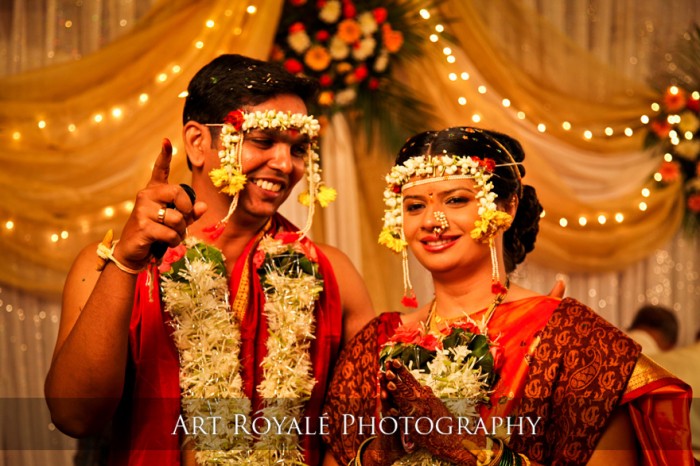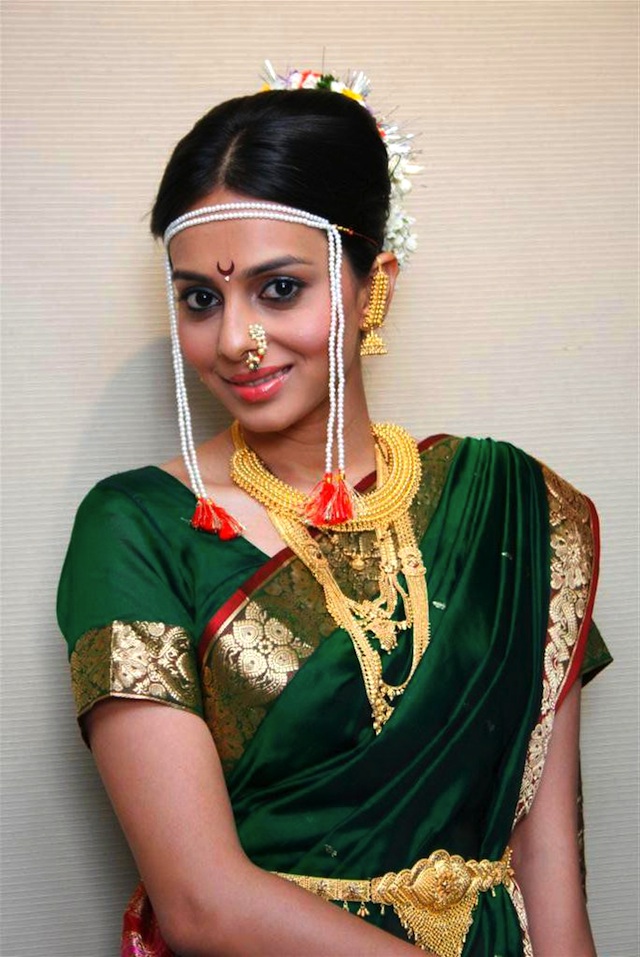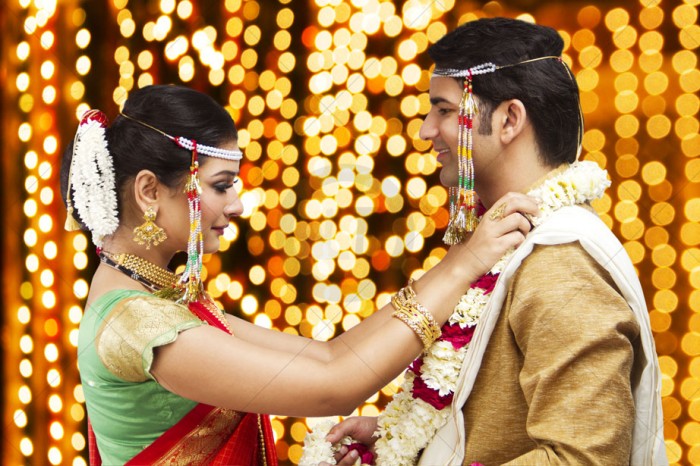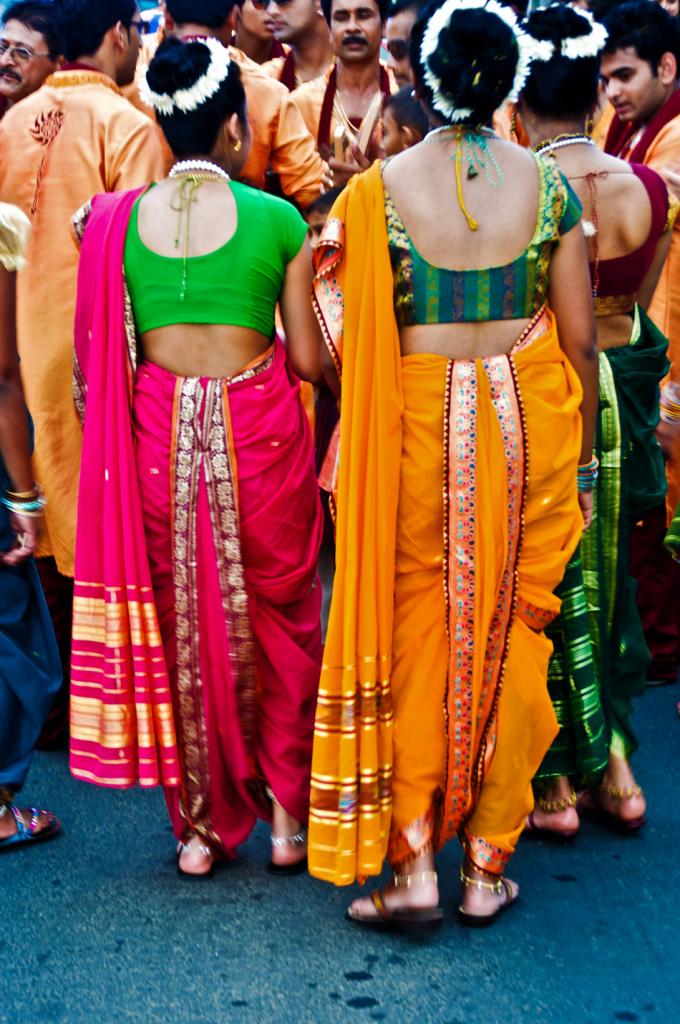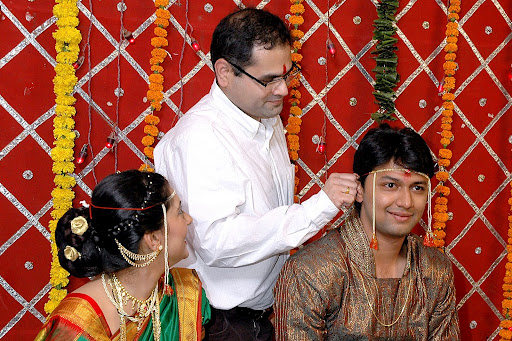Maharashtra is a state on the western part of India. The language spoken here is Marathi and the wedding functions (lagna samarambh) celebrated here are as elaborate as those celebrated in other parts of the country.
photo: www.artroyalephotography.com
Like most Hindu wedding ceremonies, the Maharashtrian themed wedding begins with an engagement ceremony that is known as the SakharPuda. Literal translation of the term means “packet of sugar”. Just like in the western culture, this ceremony is characterized by an exchange of wedding rings between the couple; additionally they are given a packet of sugar by the elders, which is symbolic of their “sweet beginnings”.
The Sakhar Puda may be an intimate or an elaborate affair depending upon the parties involved. The wedding may be held immediately after , or there may be a gap of few months in between the two. In arranged marriages, this waiting period helps the bride and groom to get to know each other better.
photo: marrymeweddings.in
The actual wedding ceremony may be held over a period of two to three days. There is no separate Mehendi or sangeet ceremony like in North Indian weddings; but the bride does get henna patterns drawn on her hands and feet prior to the main event.
A major event in the Maharashtrian wedding ceremony is the Seema-Anta Poojan. Seema means “City Limits” Anta means end and ‘poojan’ stands for prayers. In olden days, the groom usually lived in a different city from that of the bride’s. He and his family travelled to the bride’s city for the occasion. The bride’s family went to the city limits to welcome this procession. During this occasion, prayers were offered to the Gods for the safe arrival of the marriage party. A coconut was broken and sweets were distributed among the wedding guests. This tradition is still carried out today, though one does not go as far as hosting it at the city limits, but in regular banquet/marriage halls instead.
photo: martofimages.com
The main Lagna ceremony is held in front of the holy wedding fire. A priest chants hymns and explains their meaning to the bride and groom. The couple also takes the seven (vows) or rounds around the holy fire and the groom ties the Mangalsutra around the bride’s neck promising to take care of her throughout their married life. The bride and groom exchange garlands and traditional songs called Mangalashtakas are sung by the priests to bless the newlyweds. The guests too shower rice and flowers on the couple.
photo: dphotographer.co.uk
The bridal attire is usually consists a traditional silk sari called Paithani which has beautiful embellishments. It is named after Paithan, the region where it is developed. Alternatively one can opt for draping a longer sari in the traditional fashion called the Nauvaari(or 9 yard sari . 9 yards is the length of the material-where regular saris are 5 yards). The groom usually wears Kurta, Sherwani paired with the traditional Dhoti.
photo: picasaweb.google.com
All through the ceremony, there are various symbolic and meaningful events held. For example, there is one ‘fun event’ where the bride’s brother playfully twists the groom’s ear, saying he will repent if he does not take care of his sister. The groom has to then promise to do so and only then is he relieved of the pain!
The main event may be followed by a reception which is usually hosted by and held in the groom’s city. This is an informal affair usually hosted for attendees who could not make it to the wedding.
Thus, a Maharashtrian wedding ceremony is a deeply meaningful , and at the same time a lively, joyous and fun event.

